The choice of bedroom color affects sleep quality more than many realize. Studies show that the right shades for a bedroom can improve the process of falling asleep and overall well-being. The color scheme of a bedroom acts like a mood filter, working around the clock. The cost of high-quality interior paint for a bedroom varies widely depending on the manufacturer and type of coating.
The psychology of bedroom color is based on scientific studies of perception. It’s worth noting that blue shades promote relaxation of the nervous system, while red tones can increase activity. Can you afford to ignore such an impact? Bedroom design color determines not only aesthetics but also the psychological comfort of its occupants.
A well-chosen bedroom palette can contribute to faster falling asleep — confirmed by experts in color psychology and interior design.
Color Psychology and Its Impact on Sleep
 The influence of color on sleep has been studied for over 50 years. Modern data is impressive. Color psychology expert Amy Wax confirms the connection between shades and the energy of a space. In my practice with private clients, I often notice how changing a bedroom’s palette dramatically alters people’s well-being.
The influence of color on sleep has been studied for over 50 years. Modern data is impressive. Color psychology expert Amy Wax confirms the connection between shades and the energy of a space. In my practice with private clients, I often notice how changing a bedroom’s palette dramatically alters people’s well-being.
It’s known that neutral shades are perceived by a bedroom as a signal to relax. Beige is accepted by a bedroom as natural safety and warmth. Gray helps create an atmosphere of understated elegance. Color therapy in a bedroom affects a person’s psycho-emotional state, though individual reactions can vary significantly.
Best Colors for Quality Rest
Blue: The King of Calm
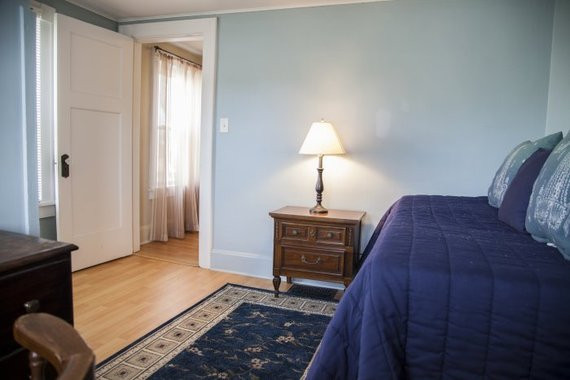 Calm bedroom colors are led by blue. Light tones are positively perceived by a bedroom at any time of day. This shade radiates tranquility, especially in natural lighting.
Calm bedroom colors are led by blue. Light tones are positively perceived by a bedroom at any time of day. This shade radiates tranquility, especially in natural lighting.
Deep blue visually reduces space. Be cautious with dark tones. They can create a sense of confinement for people with claustrophobia. It’s not always obvious, but it’s true.
Green: Natural Harmony
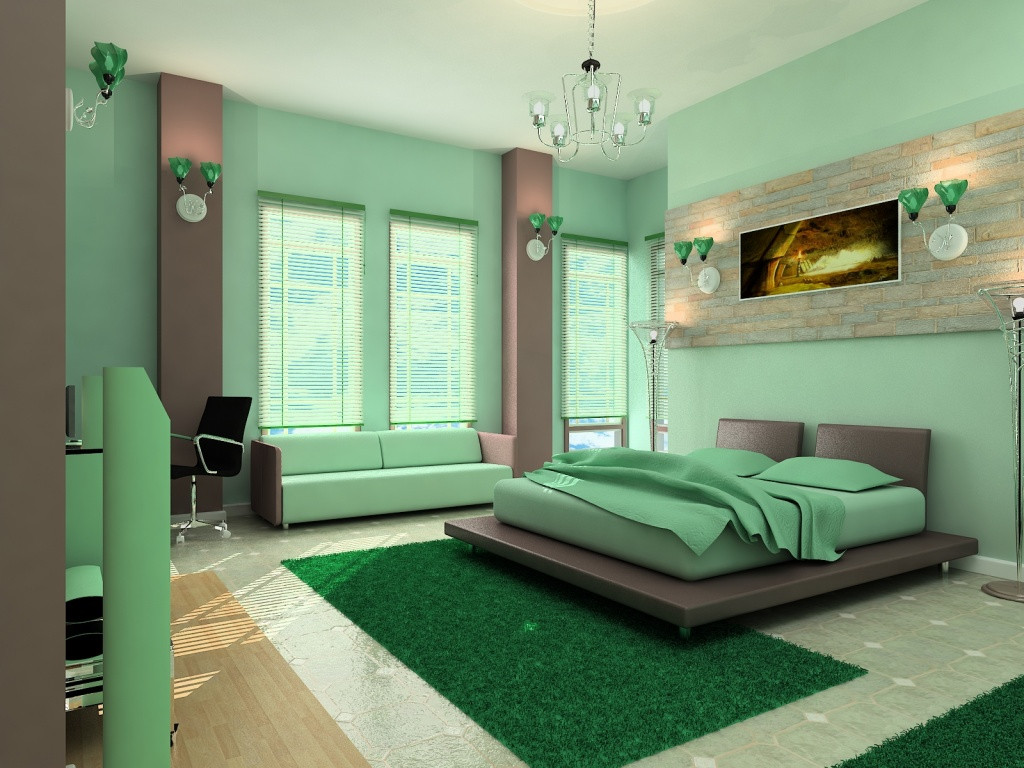 Natural bedroom colors include all shades of green. Dark green tones in daylight provide a sense of freedom. Light greens are ideal for small rooms, creating an illusion of space.
Natural bedroom colors include all shades of green. Dark green tones in daylight provide a sense of freedom. Light greens are ideal for small rooms, creating an illusion of space.
Users of green shades in bedrooms often report improved mood in the mornings — an observation confirmed by interior designers’ practice.
Purple: Luxury with Caution
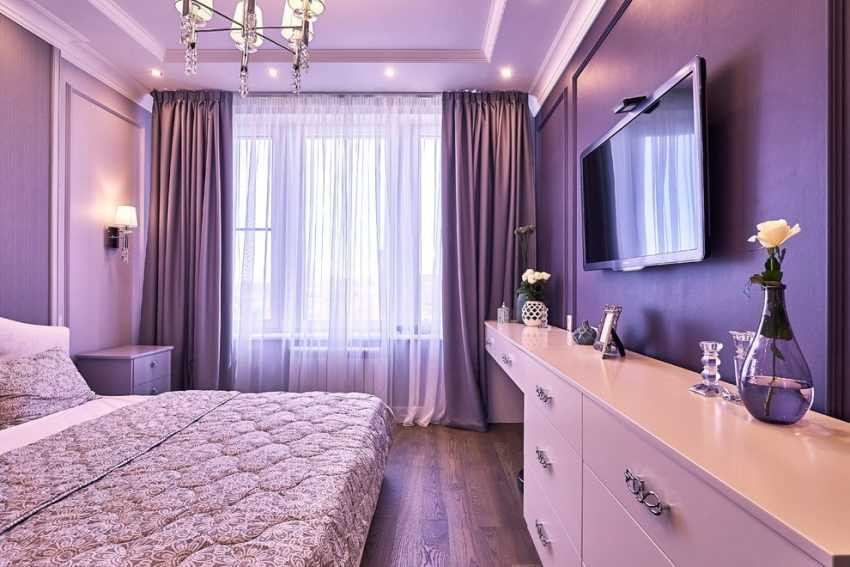 Lavender shades calm the nervous system and promote deep sleep. Deep purple tones are associated with creativity but can create a sense of oppression. Use light lavender shades as accents.
Lavender shades calm the nervous system and promote deep sleep. Deep purple tones are associated with creativity but can create a sense of oppression. Use light lavender shades as accents.
Yellow: The Energy of the Sun
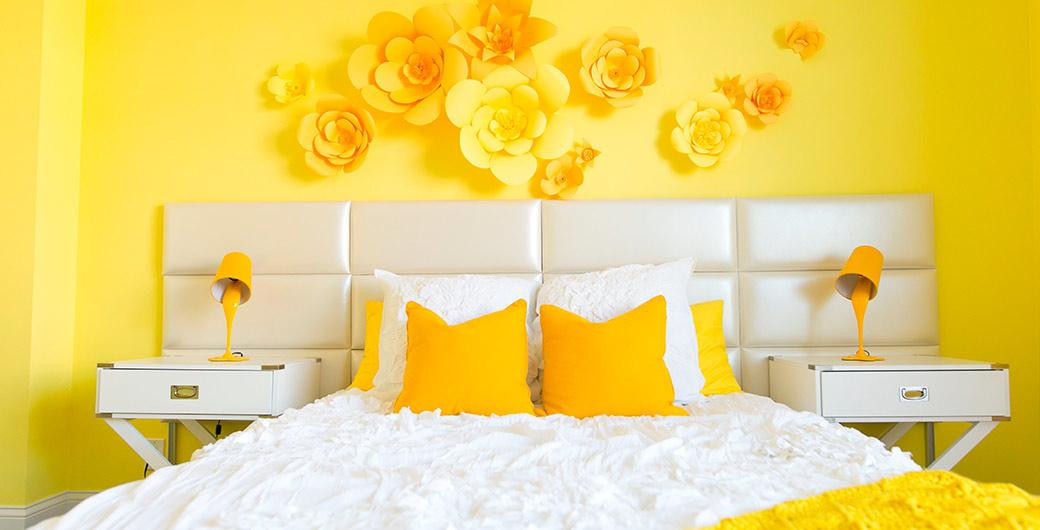 Warm bedroom colors are represented by sunny yellow. Its brightness instantly lifts the mood. Thus, yellow shades work wonderfully in any lighting, bringing energy and positivity. On a recent project, a client was skeptical about yellow — the result exceeded expectations.
Warm bedroom colors are represented by sunny yellow. Its brightness instantly lifts the mood. Thus, yellow shades work wonderfully in any lighting, bringing energy and positivity. On a recent project, a client was skeptical about yellow — the result exceeded expectations.
Neutral Palette
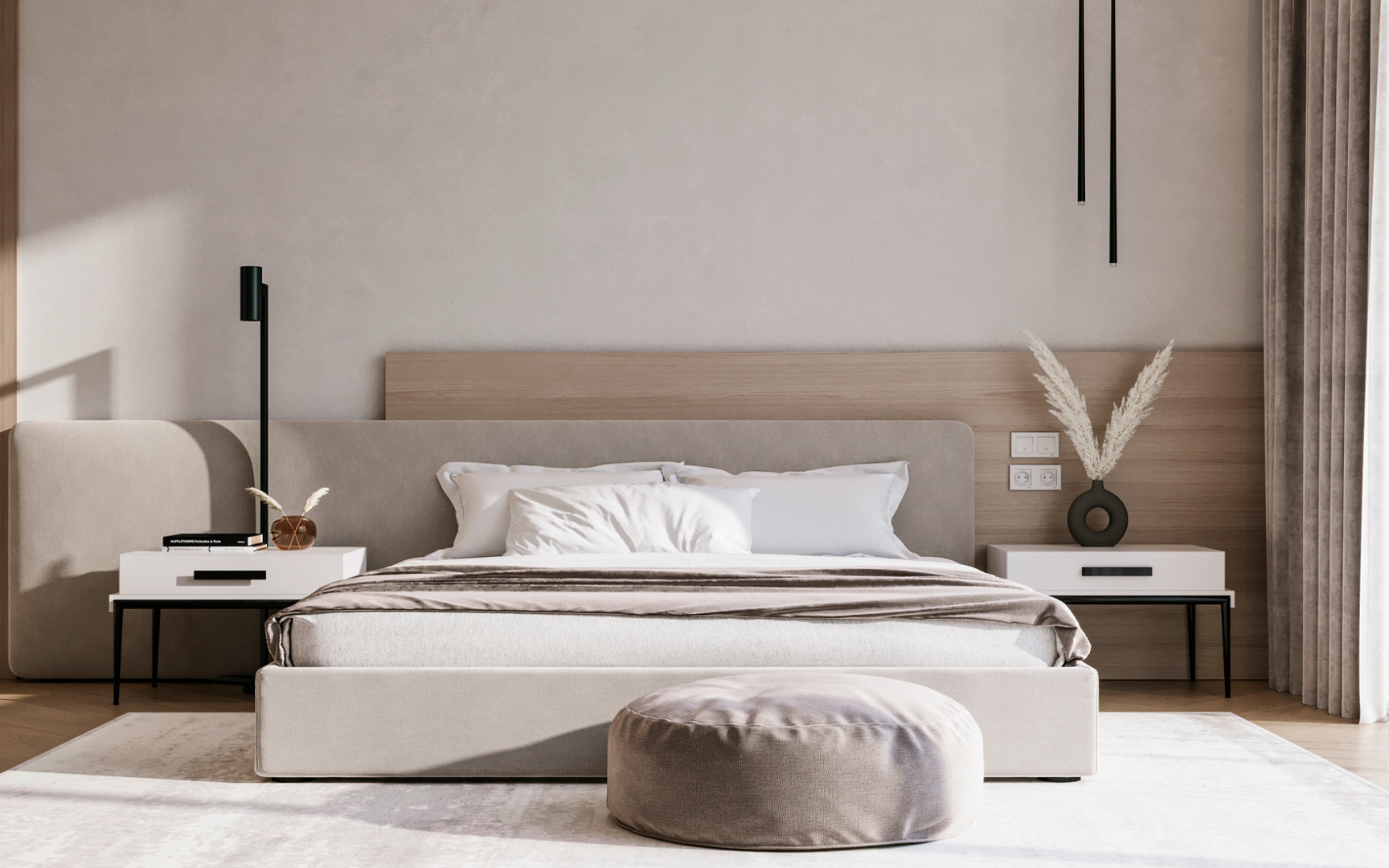 White is used by a bedroom as a base for other shades. Muted colors are perceived by a bedroom as a sign of stability. Considering the structural features of the room, neutral shades are always a safe bet. Want versatility? This is your choice.
White is used by a bedroom as a base for other shades. Muted colors are perceived by a bedroom as a sign of stability. Considering the structural features of the room, neutral shades are always a safe bet. Want versatility? This is your choice.
Colors to Avoid
Red: Passion in Moderation
 Red is rarely recommended for primary decor. Energy and confidence are its strengths. But in large amounts, it hinders relaxation, increasing nervous system activity before sleep.
Red is rarely recommended for primary decor. Energy and confidence are its strengths. But in large amounts, it hinders relaxation, increasing nervous system activity before sleep.
Black: Elegance with Caution
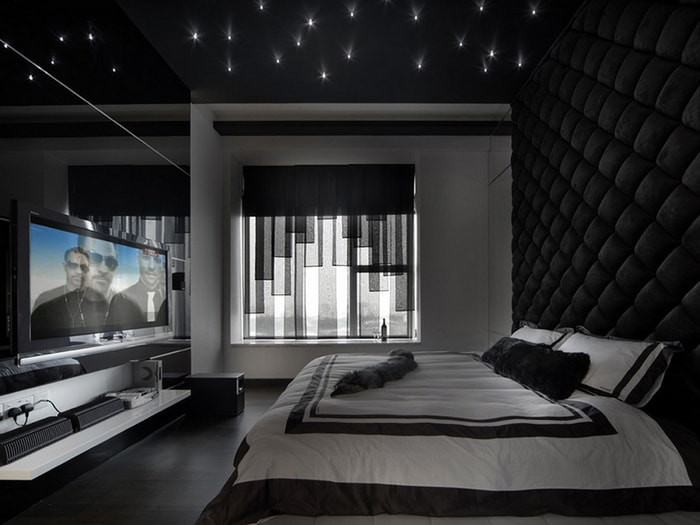 Black is best excluded from the main palette. It creates a heavy atmosphere even with excellent lighting. It can contribute to a depressed mood, especially in rooms with limited natural light.
Black is best excluded from the main palette. It creates a heavy atmosphere even with excellent lighting. It can contribute to a depressed mood, especially in rooms with limited natural light.
Pink: Tenderness with Nuances
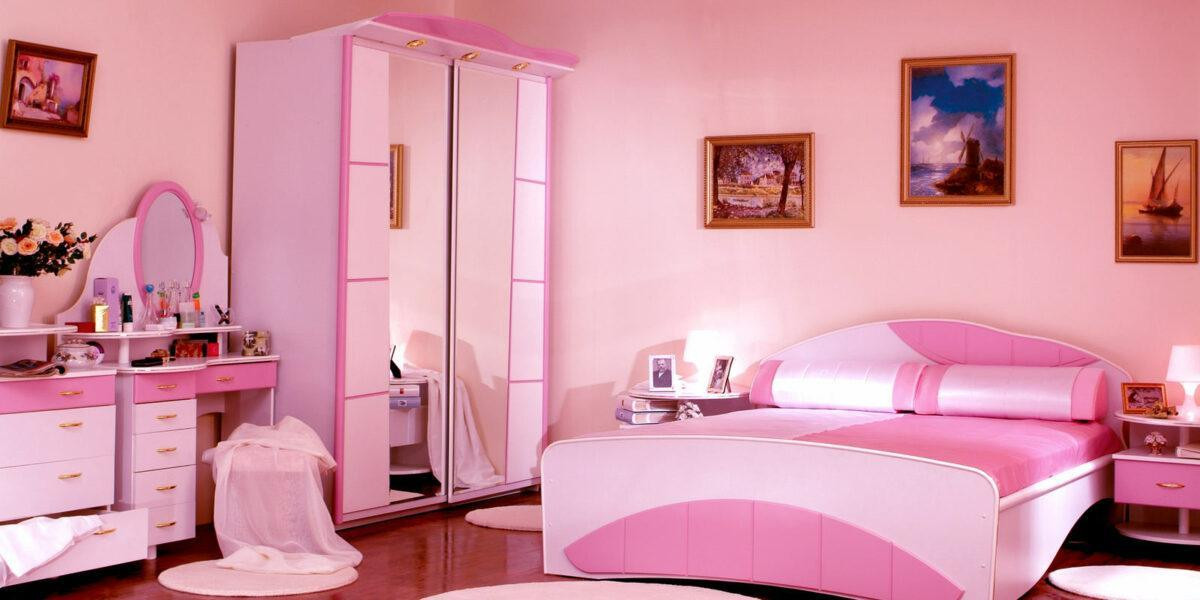 Many girls choose pink instinctively. It’s associated with tenderness and romance. However, in large amounts, especially in bright tones, it can create an impression of superficiality.
Many girls choose pink instinctively. It’s associated with tenderness and romance. However, in large amounts, especially in bright tones, it can create an impression of superficiality.
| Color | Impact on Sleep | Recommendations | Avoid in Case of |
|---|---|---|---|
| Blue | Promotes relaxation, improves falling asleep | Light shades, paired with white | Claustrophobia |
| Green | Reduces stress, improves mood | Sage, olive | Overly bright tones |
| Beige | Creates a sense of safety | Pair with textures | Monotony |
| Gray | Promotes deep sleep | Warm shades with accents | Depressive states |
| Yellow | Boosts mood | Pastel tones | Excessive brightness |
In a recent project, clients couldn’t choose between red and blue. I suggested a gray base with red pillows and blue curtains. The result exceeded expectations — the couple reported improved sleep within a week. A neutral base with bright accents became a universal solution.
Top 5 Ready-Made Combinations for Different Goals
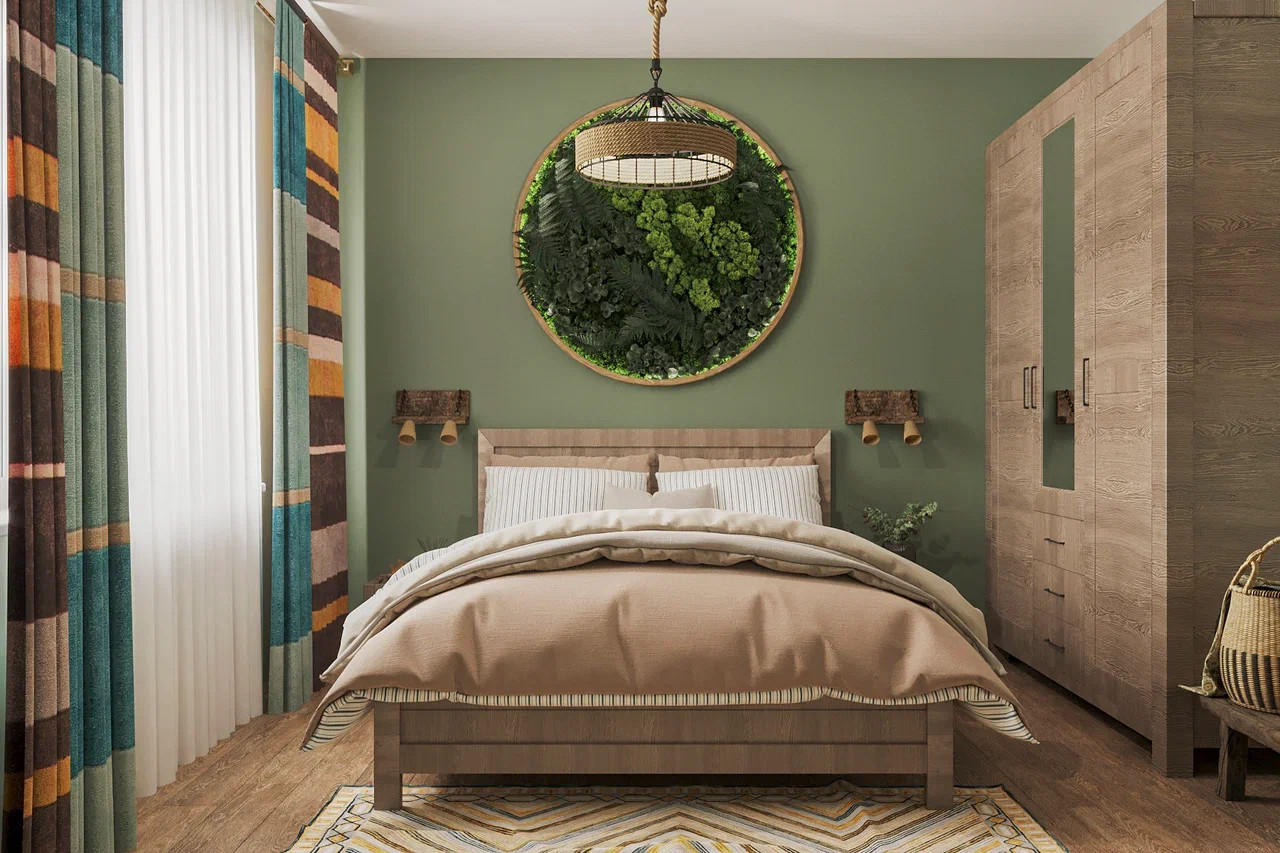 Practical experience shows the effectiveness of proven color combinations. Each combination addresses specific interior goals and suits certain conditions. Why not use ready-made solutions?
Practical experience shows the effectiveness of proven color combinations. Each combination addresses specific interior goals and suits certain conditions. Why not use ready-made solutions?
- For a small bedroom: white + pastel blue + natural wood — promotes visual space expansion
- For a romantic atmosphere: dusty pink + creamy + brass accents — creates intimacy without being overly sweet
- For maximum rest: sage + milky + gray-beige — reduces stress and promotes relaxation
- For minimalism: white + graphite + textured surfaces — modern elegance
- For Scandinavian style: gray + wooden tones + cool green — Nordic harmony
These combinations are tested in practice and guarantee a harmonious result in any interior. You can adapt the proportions to your room’s specifics.
Bedroom Color Trends 2025: What Professionals Choose
Berry linen is the top color of 2025, according to leading colorists. This muted pink-brown shade perfectly blends coziness and modernity. Companions: ochre, terracotta, cool metals. Earthy shades are embraced by a bedroom as a return to natural roots.
Experts name 2025 colors as key saturated berry shades and moody neutrals. In a project last season, I used terracotta accents with a gray-beige base — clients noted a special cozy atmosphere. Why resist proven trends?
Pastel tones are warmly welcomed by a bedroom, especially with metallic accents. This reflects a strive for eco-friendliness and comfort in living spaces. Cool shades in a bedroom pair with warm materials for perfect balance. The result is a harmony of opposites.
Types of Paints and Technical Aspects
Choosing the type of paint for a bedroom is as important as the color. Water-based acrylic paints ensure wall breathability and environmental safety. Latex paints are easy to clean and suitable for high-humidity rooms.
The quality of the primer significantly affects the final color. White primer lightens the finish shade, while tinted primer can alter its saturation. Note that the same color may look different on various wall materials (drywall, plaster, concrete).
Practical Tips for Choosing Colors
Bedroom Lighting: The Key to Proper Perception
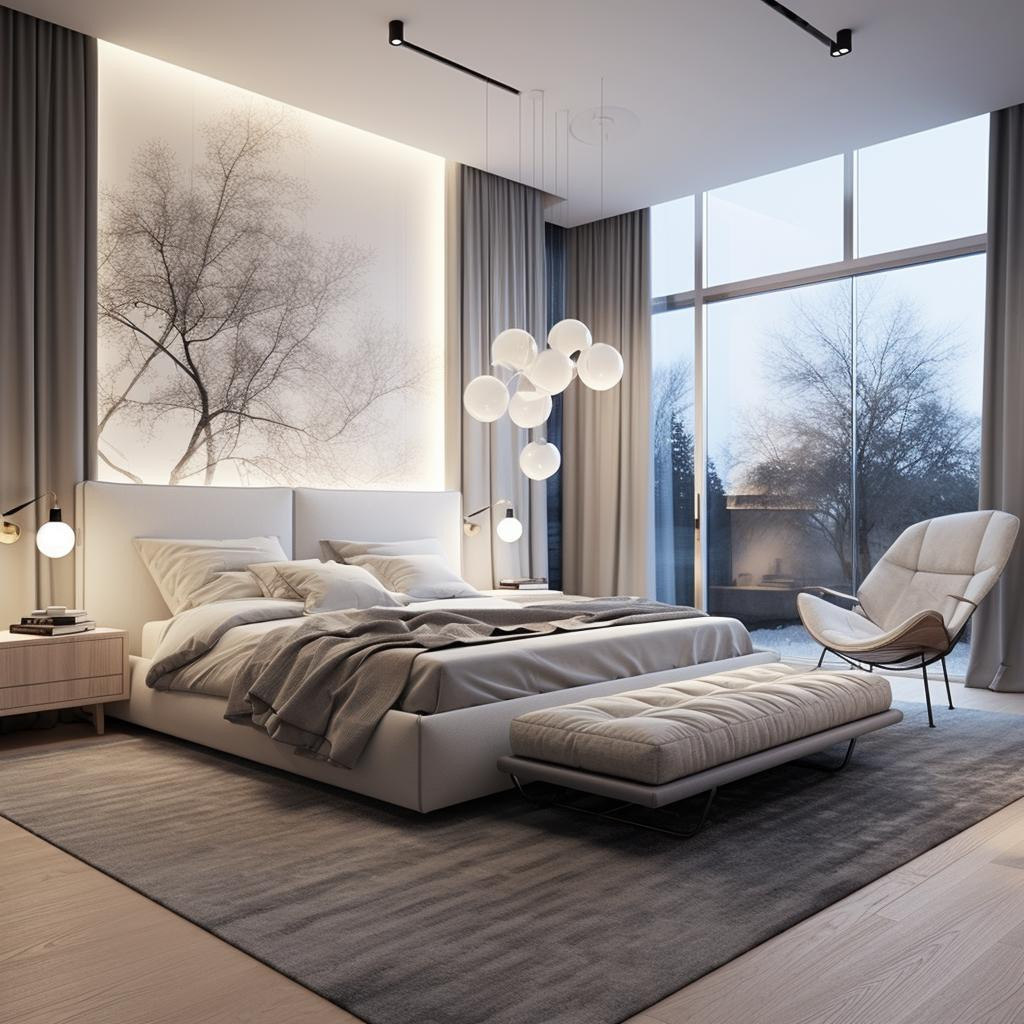 Natural light dramatically changes color perception. Northern rooms require warm shades to compensate for cold light. Southern rooms can handle cooler tones.
Natural light dramatically changes color perception. Northern rooms require warm shades to compensate for cold light. Southern rooms can handle cooler tones.
Artificial lighting also affects colors: incandescent bulbs add yellowness, LEDs may give a bluish tint. Test colors under different light sources.
Bedroom Size
For small bedrooms, choose light tones. They visually expand space. Large rooms allow experimentation with darker shades.
Harmonious Color Combinations
Bedroom interiors change shades drastically depending on the light source. Always test colors under different lighting. Daylight and artificial light can turn a perfect shade into a disappointment. In practice, I often see clients surprised by this transformation.
Bedroom design color should balance aesthetics and functionality. The popular 60-30-10 rule (main color, secondary, and accent) helps create a harmonious composition. Color therapy in a bedroom works with the right proportions, creating an atmosphere for quality rest. Want to hire a professional for bedroom design? It’s worth considering for complex layouts.
The following information will help make a final choice. Consider existing interior elements. Carpets, furniture, and textiles should harmonize with the new palette.
Common Beginner Mistakes in Choosing Bedroom Colors
Even the most thought-out design can suffer from typical color palette mistakes. Study these common errors to avoid disappointment and extra costs.
- Choosing a color based only on a picture — always test on the wall
- Ignoring lighting — color changes drastically under different lights
- Too many bright accents — the 60-30-10 rule still applies
- Fear of dark colors — they can enhance coziness in small bedrooms
- Copying without adaptation — consider your space’s specifics
Knowing these pitfalls will help avoid costly reworks and create a truly comfortable space from the start.
Checklist for Choosing the Perfect Bedroom Color
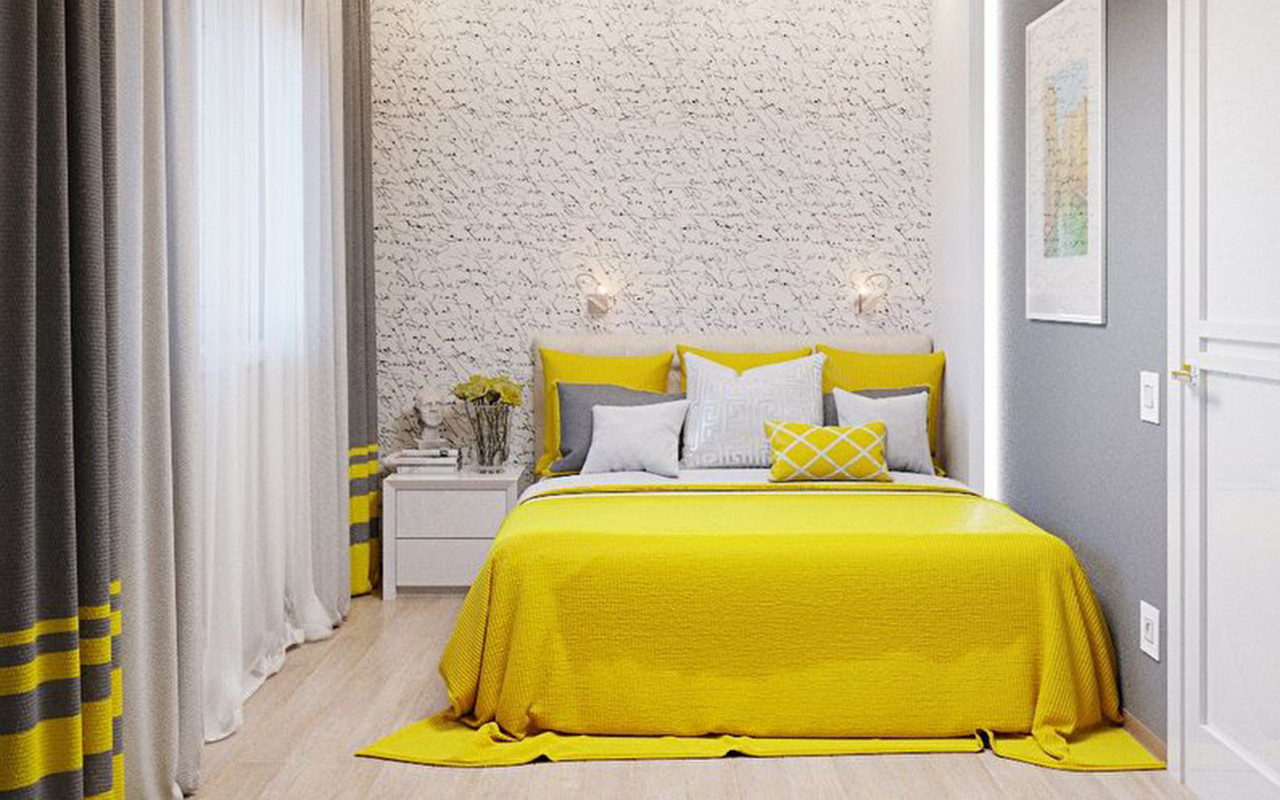 A systematic approach to choosing a color palette eliminates randomness and guarantees a thoughtful result. Follow this proven algorithm for achieving perfect balance.
A systematic approach to choosing a color palette eliminates randomness and guarantees a thoughtful result. Follow this proven algorithm for achieving perfect balance.
- Determine the bedroom’s main function (sleep only/work/relaxation)
- Measure the amount of natural light throughout the day
- Consider the room’s size and ceiling height
- Choose 3-4 options and test on the wall
- Review colors at different times of day
- Select 2-3 complementary shades using the 60-30-10 rule
- Calculate the budget for paint and materials
- Consider existing furniture and textiles
- Consult with those sharing the bedroom
- Make a final choice and start painting
Following this algorithm ensures a thoughtful result and avoids costly reworks. Each step is based on practical experience and helps account for all important nuances.
The right choice of bedroom color scheme is an investment in quality of life and daily comfort. From a careful approach to the main color to considering lighting and wall materials — every detail impacts the final result. Your bedroom should be a place of maximum comfort, where colors work for your well-being. Remember: color perception is individual, so always trust your own feelings when making the final choice.

